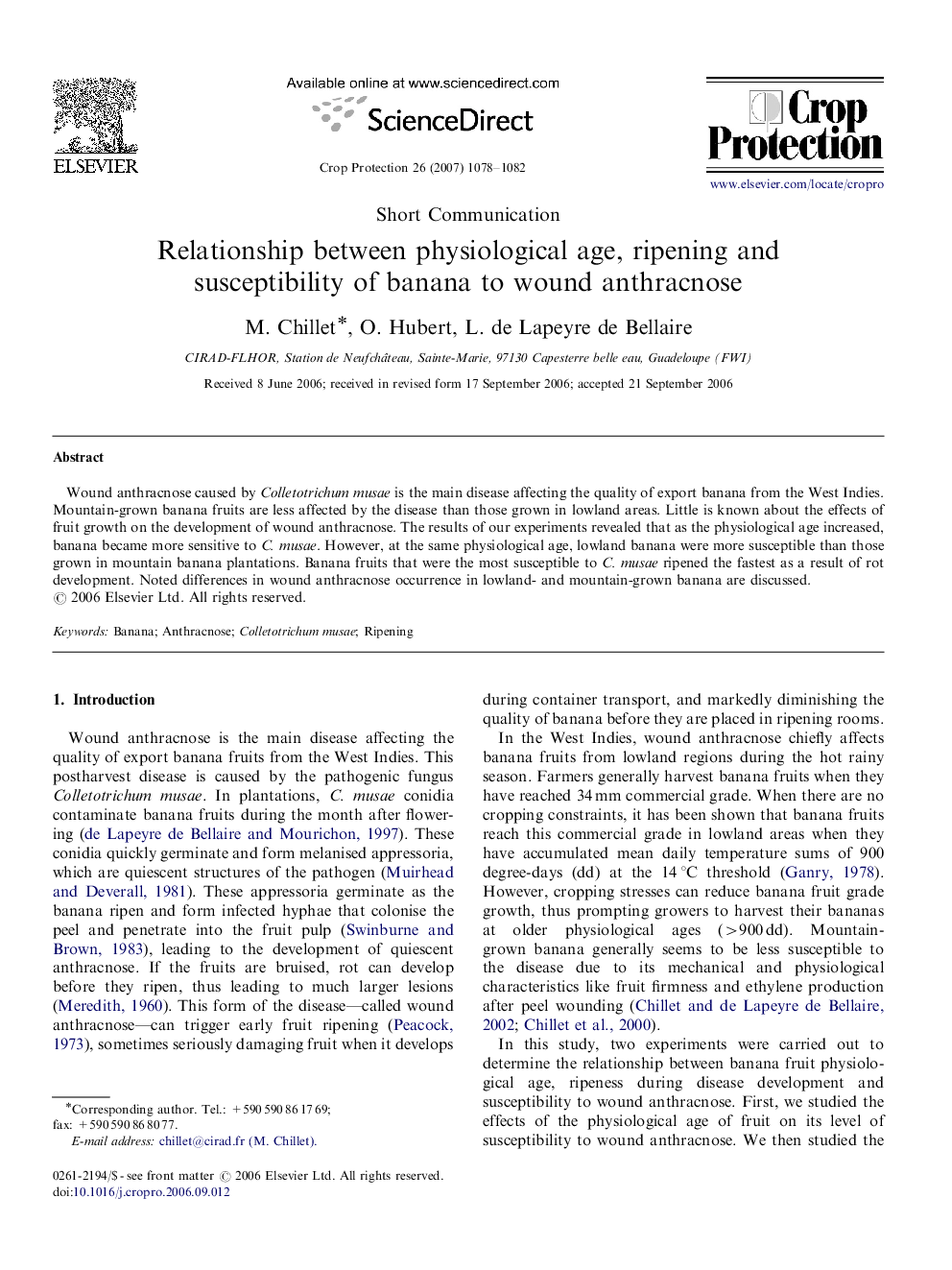| Article ID | Journal | Published Year | Pages | File Type |
|---|---|---|---|---|
| 4507859 | Crop Protection | 2007 | 5 Pages |
Abstract
Wound anthracnose caused by Colletotrichum musae is the main disease affecting the quality of export banana from the West Indies. Mountain-grown banana fruits are less affected by the disease than those grown in lowland areas. Little is known about the effects of fruit growth on the development of wound anthracnose. The results of our experiments revealed that as the physiological age increased, banana became more sensitive to C. musae. However, at the same physiological age, lowland banana were more susceptible than those grown in mountain banana plantations. Banana fruits that were the most susceptible to C. musae ripened the fastest as a result of rot development. Noted differences in wound anthracnose occurrence in lowland- and mountain-grown banana are discussed.
Related Topics
Life Sciences
Agricultural and Biological Sciences
Agronomy and Crop Science
Authors
M. Chillet, O. Hubert, L. de Lapeyre de Bellaire,
